Cooler, less humid conditions indicate that fall has officially arrived. And out of habit, you turn the heat up to warm your home and maintain your comfort. But when you see the charges on your electric bill roughly a month later, is that actually a good idea?
Remaining cold shouldn’t be the only way to save on energy costs. Instead, consider how to keep as much heat as possible in your home and curb unnecessary electricity usage with our helpful cold-weather energy checklist for your home.
At ElectricityPlans.com, we focus on helping people save on their electricity bill. But our Fall home maintenance tips will not only help with energy savings, they’ll help keep you safe.
Fall is also one of the best times to shop for an electricity plan. Electricity rates tend to drop in the shoulder seasons, spring and fall.
Fall Energy-Consuming Habits
Understand why you’re seeing a sudden spike in electricity usage starting in September or October:
- Heating your home: You turn off the AC and turn up the thermostat. While you might use less heat early in fall, you start leaving it on for the whole day (and even all night) once the temperatures hover close to freezing.
- Frequent appliance use: From hot meals to Thanksgiving and adding a space heater near where you work, your everyday cooking, cleaning and comfort habits automatically draw more electricity during the last quarter of the year.
- Extra light: Fewer hours of daylight mean you flick the switch earlier to light your immediate area.
Fall Maintenance Checklist for Improving Your Home’s Energy Efficiency
If you want to stay warm, you have to limit the number of areas where air can enter and heat can escape. With this as your overarching goal, make a fall maintenance checklist including the following tasks:
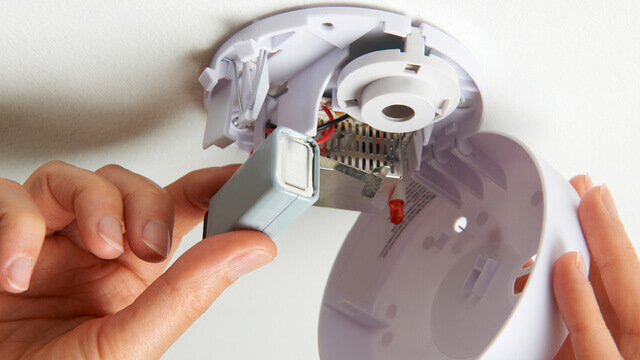
Replace batteries in your smoke detector and carbon monoxide detector.
You should change the batteries in your fire alarm, smoke detector and carbon monoxide detector every 6 months. It’s easy to remember if you change the batteries when you “fall back” or “spring forward” with the time change.
While you’re at it, check the date on the back of the carbon monoxide detector to find the manufacturer date. You need to replace your CO detector every 5-7 years.

Check your chimney for soot and blockages.
Your fall home maintenance list needs to include your fireplace, whether it’s wood-burning or gas.
If you have a wood-burning fireplace, soot and creosote can build up in the chimney to increase your risk of a chimney fire. You should have your chimney inspected and cleaned prior to every heating season.
If you have a gas fireplace, you’ll want to check that there are no birds nests or other flammable materials in the chimney before lighting it up.
Check to make sure the damper (the metal plate that opens and closes the flu) is operating correctly.
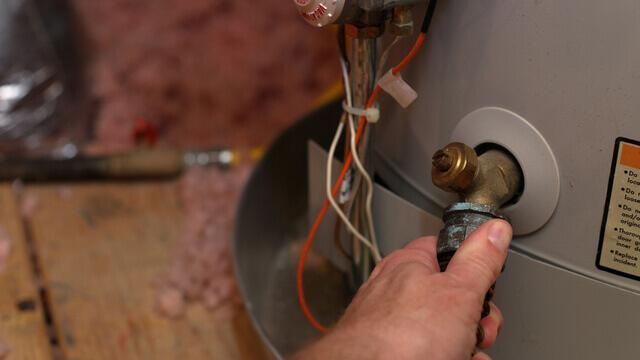
Flush your water heater.
Over 85% of homes in the U.S. have hard water, which means there’s dissolved calcium and magnesium in the water. When calcium is heated, like it is in your water heater, solid deposits of calcium carbonate can form.
These deposits, usually called lime scale, can build up in your water heater, resulting in sediment. That will lower the efficiency of your water heater and raise the cost of heating the water. Whether you have a gas or electric water heater, you should regularly drain the water heater to remove sediment.
Want to know if your water heater has sediment? Knock on the side of it. If there’s a different sound on the bottom vs. the top, you probably have sediment in your water heater.
Flushing your water heater is an important part of water heater maintenance. Whether your water heater is gas or electric, you can find information on how to flush your water heater.
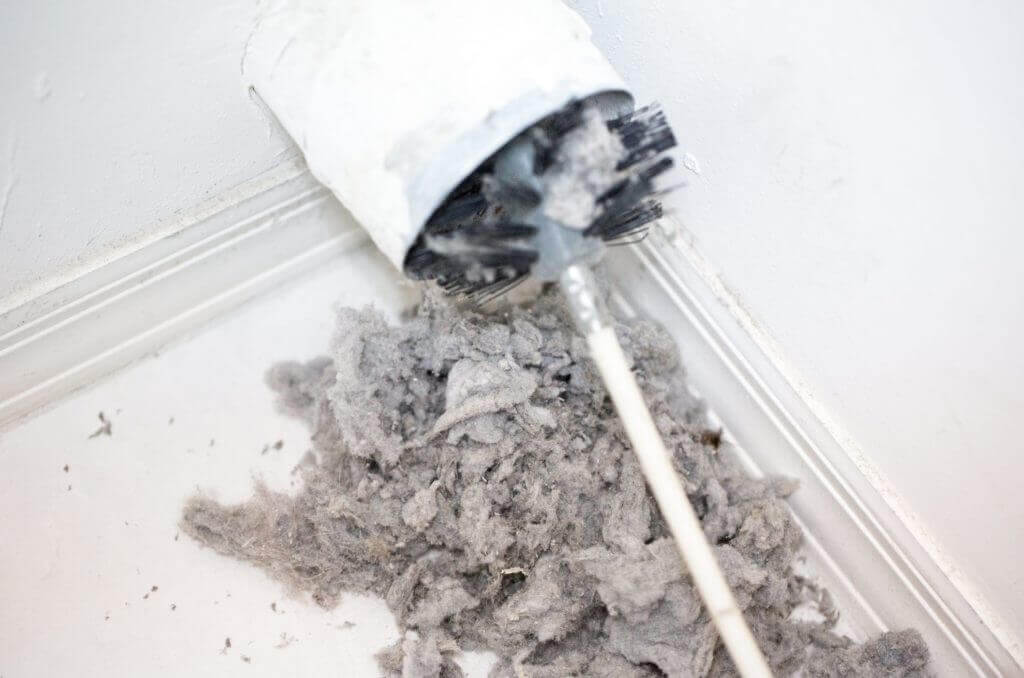
Clean lint from your dryer exhaust duct.
Of course you clean the lint trap, every time you use the dryer. But there’s also likely lint buildup in the exhaust duct. This lint is highly flammable, which causes a safety issue. And it can make your dryer work harder to dry your clothes, which impacts your electricity bill.
How do you know if you need to clean your lint exhaust? Your clothes will take longer to dry, and may be hotter than normal when you take them out. The outside of the dryer may get hot as well.
To clean your dryer exhaust duct, first unplug your dryer (and if it’s a gas dryer, turn off the gas.) Pull the dryer away from the wall and disconnect the hose at the dryer. Once disconnected use your vacuum to remove loose lint at the connection point. Then use a dryer vent cleaning tool to clean the hose. This video shows all of the steps to cleaning your dryer vent.
To make sure your house is in tip top shape for fall, consider a DIY Home Energy Audit. Use our home energy audit checklist to make sure you cover the major areas of your home!

Find and fix air leaks in your home.
Weatherstripping and caulking leaky windows are simple ways to keep the heat inside where it belongs. You can easily check to see if you have a draft by closing a door or window on a dollar bill. If you can pull it out easily, your weatherstripping needs to be replaced.
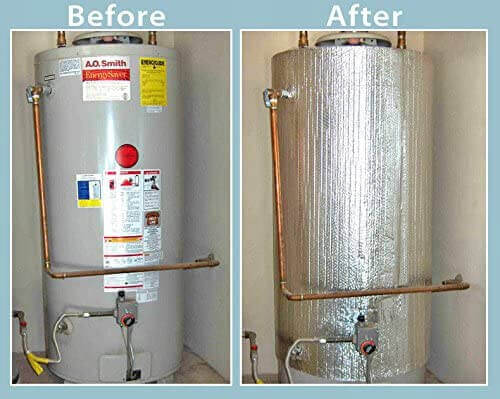
Insulate your water heater.
Your hot water tank holds a reserve of water that it heats up to a set temperature (usually 120* Fahrenheit). When you turn on a hot water tap, water is released from the tank supplying you with hot water from the faucet. However, the tank must keep its reserve warm at all times to ensure that water is hot when you turn on your tap.
Water heating is the second most energy-intensive part of your home, after your heating and cooling. It accounts for around 18% of your energy bills!
If your water heater is in an uninsulated space like your garage or attic, take the time to wrap it up. A water heater blanket keeps more of the heat inside the water tank. That means you’ll spend less money heating up your water.
How can you tell if you need a water heater blanket? Feel the outside of the water tank. If it’s hot, heat is escaping, which makes your water heater inefficient.
Newer heaters usually come from the factory with more insulation around the tank than older heaters. Water heaters last an average of 15 years. If your heater is older than 15 years or so, it may make more sense to replace it now with a more efficient one. Check with your local gas or electrical utility company first. They may offer a rebate program to help with the cost of replacement.

Plant trees as a wind block.
A shade tree can help keep your home cool in the summer, and lets in the sun during the winter. And a bank of evergreen trees or shrubs, planted upwind of your home, can help block wind that will find it’s way in through cracks in your home.
Fall is the best time to plant a new tree. The cooler temperatures can help the tree establish roots before the winter. Keep your new tree well-watered and mulch the roots for added insulation before the cold sets in.
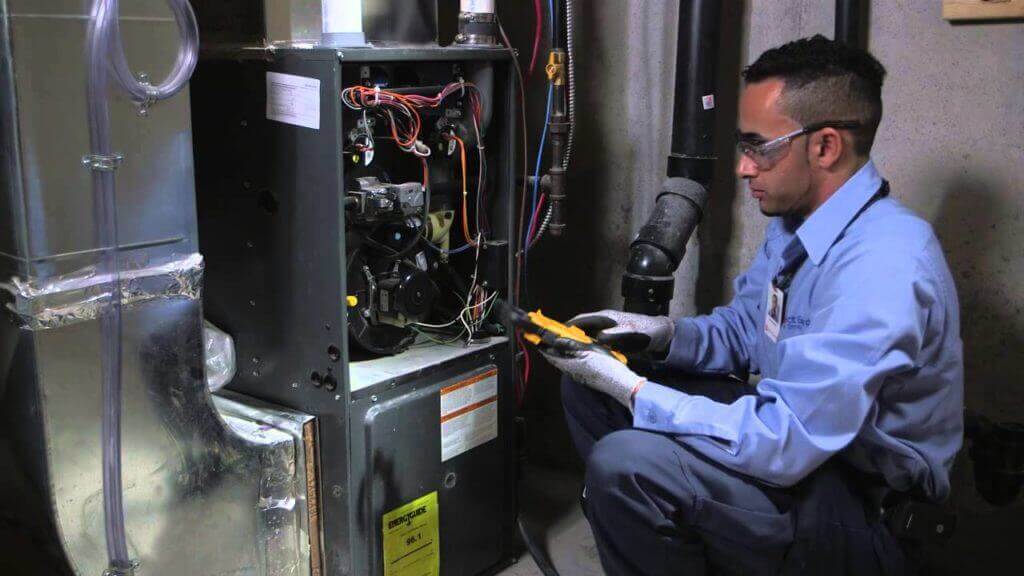
Get a furnace tune-up.
The biggest tip for your fall home maintenance? Schedule a maintenance appointment for your furnace.
Heating and cooling your home makes up the biggest part of your electricity bill, accounting for over 50% of your energy usage.
About 48% of U.S. homes use natural gas to fuel their furnace, while 37% use electricity. Other fuels like heating oil or propane make up the balance (US Census). But even if you use natural gas, you will still use electricity to move the heat through your home.
A furnace tune-up in the Fall will keep your furnace running efficiently. And you’ll avoid an expensive fix during the heating season. During a furnace tune-up, the technician will:
- Check for burn marks on the side of furnace
- Check for (and remove) dust and debris
- Inspect the heat exchanger for holes and cracks
- Inspect for gas leaks (if applicable)
- Look for holes and rust spots on your flue pipe (which can indicate your furnace is not burning efficiently)
- Check for blockage in the vent and flue pipe
- Inspect the vent motor and vent pipe
- Inspect the condition of the evaporator coil
- Check the condition of the high temperature shut-off switch, burner safety switch and flue safety switch
- Check for carbon monoxide
When you keep your furnace in peak operating condition, you save on your electricity bill while keeping warm!
Check the Insulation
Get in the habit of doing this every couple of years. Insulation cracks, chips or develops air pockets — all of which affect its ability to hold onto heat. And because you feel more of the cold, you crank up the temperature and see your electric bill rise proportionally.
In addition to the rooms you use, check the attic to make sure air isn’t escaping around the roof.
Remind yourself to reduce energy usage
As a tip, make the most of fall’s limited daylight hours and restrict how frequently you turn on the space heater:
- Space heaters: These portable appliances draw a charge when heating your immediate area. To use one, keep the doors closed and only keep it on for a couple of hours at a time. And to reduce fire risks, make sure to situate them away from flammable materials.
- Thermostat use: 68° to 70° F is the sweet spot for heating your home during the day. Then, lower it — but don’t completely shut it off — at night. Consider programming your thermostat to follow this pattern.
- Keep the curtains open: Do this during the day to let light in. Insulated, fully sealed windows then trap the heat to warm your home’s interior, which reduces how frequently you use the furnace.
Check this list of common energy wasting mistakes around the home. How many of these habits can you change?
Shop for Electricity to Keep Your Bill Low
After you’ve taken care of your home maintenance chores, spend a little time looking at your electricity bill.
If you are in a deregulated market, like Texas, Ohio, Pennsylvania or Connecticut, you can shop for your electricity supplier. Lock in the lowest available rate by shopping for electricity online.
If you have already shopped for electricity, check your expiration date and mark your calendar. Once your contract expires, you’ll get service on a much higher rate. Make sure you shop for a new electricity plan and lock in a new rate before your contract expires.
Save this to your Pinterest page for safekeeping! And check out this list of other items to include on your fall home prep plan.

